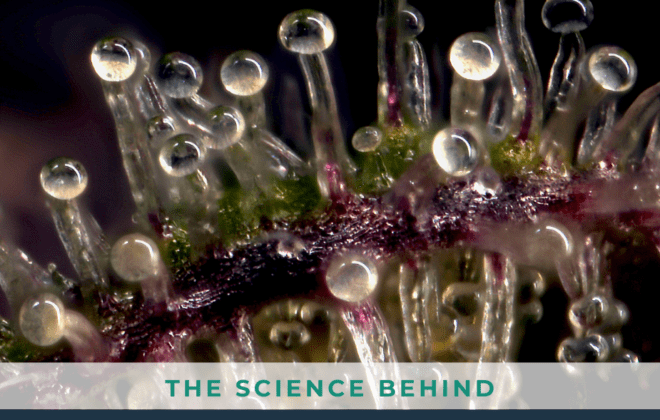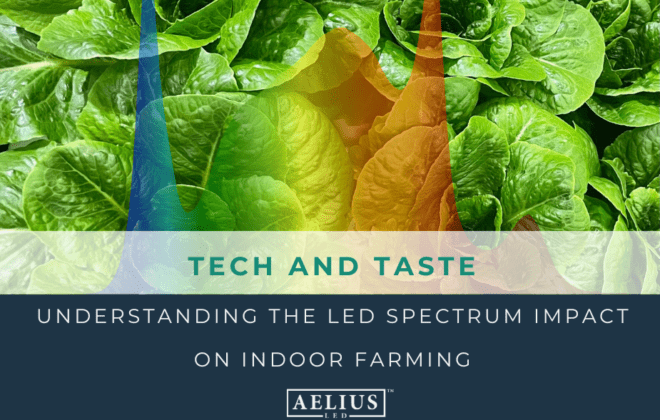Getting Out of the Dark Ages with Pest Management

Integrated Pest Management
No matter how compliant your facility, and how strong your sanitation and control methods are, pests still seem to find a way to sneak in. Managing pests is the blight of almost every commercial grower. The past few years has revealed that the “old method” of preventative spraying can cause more harm than good. Over time it was discovered that pesticides not only kill the pests, but disrupt the entire operation including depleting the soil from beneficial microbes and in turn, making the plants themselves less resilient.
As market demand shifts to ethically grown cannabis, cultivators are steering away from toxic sprays and are adopting a more holistic approach to help combat the challenges of pests and diseases. Integrated Pest Management is a holistic approach to pest management that was initially launched in the agriculture fields and is now ramping up in indoor facilities. These practices are centered in developing a system that not only limits the amount of pests in the environment, but also strengthens the plants themselves-so that if the pests sneak in they are able to resist them.
The concept of Integrated Pest Management was developed when growers began to realize that there is much more to pests, than the pests themselves. These sustainability initiatives recognizes that there are benefits in maintaining the natural biodiversity of a crop. Nature takes care of itself. The weaker plants become food for insects and disease. While the stronger plants produce their own defense mechanisms to prevent infestations. In truly biodiverse environments beneficial insects and fungi play a vital role in controlling the amount of plants that are damaged, by feeding on the predators.
The challenge with indoor operations is that it is up to the cultivator to manufacture an environment that mimics the natural biodiversity, including the pest predators, that would be found outdoors.
Science is slowly catching up, and is continually discovering new ways to bring integrated pest management indoors. Now, instead of looking at potentially toxic pesticides to destroy the pests, cultivators are actively seeking out beneficial insects to naturally do the work for them. The challenge is that when you take a crop indoors, it is up to the grower to introduce this biodiversity into the production.
But How Effective is Integrated Pest Management?
This depends on your perception. If you want a zero pest environment, then integrated pest management is not the method for you. These predators need pests in order to live (it’s their food), so growers need to be comfortable with some pests living in their facility. It is also not as simple as releasing a few bugs and letting them do their “job”. Instead, regulated biological controls are used as part of an integrated pest management program
When growers adopt integrated pest management, it is about viewing the entire operation as one giant puzzle. Controlling pests is no longer about spraying them to get rid of them but developing an ecosystem where it is challenging for pests to thrive.
Adopting this concept requires a shift in the way that cultivators look at pests and disease within the operation, as it longer be complete eradication. To use bio controls successfully a few other elements need to be in place including regular sanitation, cultural practices, scouting, barriers, and record keeping.
The grower needs to be aware which pests that they are attempting to control so that they choose the right bio-control agents to fight them. Without a strong control process, this method could become the infestation that you are trying to prevent.
Much More Than Ladybugs
When we talk about bio-controls, the conversation is usually centered around a few beneficial insects, specifically ladybugs and praying mantis. However, there is so much more to this technique including the option to use a variety of biological methods, to reduce the population of pests, including insects, mites, bacteria, fungi and nematodes. As growers, it’s about understanding the pests that you want to control, and the approved methods which will vary depending if you are ACMPR grower or commercial operator, and then choosing the best method to respond to it.
Rethinking The Way We Manage Pests
Growers that are opting for biological solutions need to be comfortable with some level of pests. The goal is to not eliminate the entire population, but keep it to a point that the pests that are not impacting the overall production (and in turn the profit) of the operation. In fact, you need to have some level of pests in the population to keep the biocontrol agents alive. Without these pests, the biocontrols agents will either starve or move somewhere to feed (either way they will need to be replaced).
The other major adjustment is that cultivators need to spend time not only observing their crop but paying special attention to the pests in their operation. This includes continuous strict monitoring, understanding what the pests are doing and where the pests are, so that the right methods can be chosen. This pest scouting and monitoring must be done on a regular basis to be certain that the right biological agents are being used.
The Take Away:
Biocontrols can be an incredibly effective solution, both economically and environmentally-but it requires a major shift in thinking about the way that the grower sees pests (and pest management). For this process to be effective, growers need to be committed to the long term health of their facility including investing in proper sanitation processes and taking the time to scout out the pests, maintain valid records, and then determine the best solution.
This is not a solution for a grower that is looking for a quick fix. It requires patience to help develop a balanced system where the natural predators control the pests in your growing operation.
So, if you’re new to biocontrols, start off small with one biological agent and remember to always try new methods in your R&D space. This will provide you with the ability to observe how the pest management choice works in your infrastructure and determine any changes that may need to be made.




